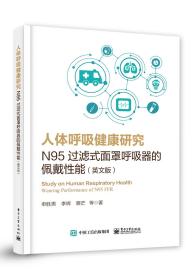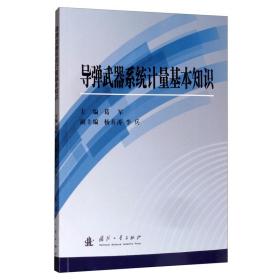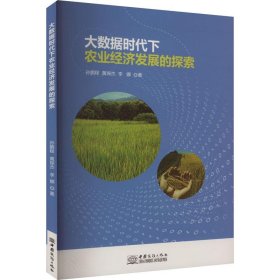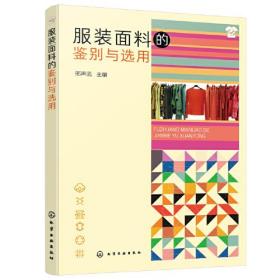
人体呼吸健康研究:N95过滤式面罩呼吸器的佩戴性能
全新正版未拆封
¥ 29.57 2.7折 ¥ 109 全新
库存2件
作者申胜男
出版社电子工业出版社
出版时间2020-12
版次1
装帧其他
上书时间2024-10-03
- 在售商品 暂无
- 平均发货时间 50小时
- 好评率 暂无
- 最新上架
商品详情
- 品相描述:全新
图书标准信息
- 作者 申胜男
- 出版社 电子工业出版社
- 出版时间 2020-12
- 版次 1
- ISBN 9787121396274
- 定价 109.00元
- 装帧 其他
- 开本 16开
- 页数 268页
- 字数 375千字
- 【内容简介】
- 本书针对人类呼吸安全问题,运用商业软件及自主开发程序,从提高呼吸的舒适性和佩戴的舒适性两个角度全面而详细的研究了纤维对空气颗粒物的过滤性能、口罩内流场分布和口罩与人脸的接触特性,并提出了新型风扇口罩的设计和面部密封设计的新技术。本书全部内容具有原创性和前瞻性,部分研究成果发表在公共环境卫生行业的*期刊。本书的所有研究内容、方法和结果的科学性及可信度均得到同行专家认可,本书的研究将为控制和降低雾霾对中国民众呼吸健康造成的威胁提供可靠、有效的理论依据和指导。
- 【作者简介】
- 申胜男,武汉大学动力与机械学院副教授,硕士生导师,分别于2001年和2007年获得哈尔滨工业大学的学士和硕士学位,2012年毕业于新加坡南阳理工大学,获机械工程专业博士学位。已发表国际SCI期刊论文50余篇,国际会议学术报告40余篇,授权发明专利9项,软件著作权3项。作者长期从事跨尺度多物理场耦合分析、生物流体力学的研究,以核心成员身份参加新加坡科技研究局基金项目2项,近年又主持国家科学自然基金青年项目1项,主持湖北省自然科学基金青年项目1项,主持武汉大学自主科研(青年教师)资助项目1项,主持武汉大学引进人才(优秀青年学术骨干)项目1项,项目金额共计570多万。2014年获批武汉大学\"351人才计划”珞珈青年学者,2015年获批湖北省楚天学者。同时作者也积极开展国内外的学术交流与合作,也取得了丰硕的成果。直至今日,已和国内多所大学和研究机构建立了学术交流与合作关系,与新加坡南洋理工大学,德克萨斯理工大学保持着密切的联系,建立了实质性的科研合作关系,极大推动了学院学术交流的发展。
- 【目录】
-
Chapter 1 Introduction001
1.1 Background002
1.2 Motivation004
1.3 Outline007
Chapter 2 Study of the filtration performance of multi-fiber filters009
2.1 Introduction011
2.2 Model of multi-fiber filters014
2.2.1 Geometric model and simulation method of multi-fiber filters014
2.2.2 Model validation016
2.3 Filtration efficiency and its optimization020
2.3.1 Comparison of filtration performance between parallel and
staggered designs020
2.3.2 Filtration efficiency at different face velocities and particle
diameters022
2.3.3 Filtration performance of layered filters with the same total SVF024
2.3.4 Optimization of pressure drop and filtration efficiency025
2.4 Conclusion028
References030
Chapter 3 Study of particle rebound and deposition on fiber surface034
3.1 Introduction036
3.2 Models of flow field and particle movement041
3.2.1 Flow field and particle movement041
3.2.2 Particle rebound model044
?
3.3 Particle transport and deposition048
3.3.1 Effect of particle rebounds on particle deposition048
3.3.2 Effects of face velocity on particle deposition050
3.3.3 Effects of particle diameter on particle deposition052
3.3.4 Filtration efficiency of a single fiber054
3.4 Conclusion057
References059
Chapter 4 Investigation of the flow-field in the upper respiratory system
when wearing N95 FFR064
4.1 Introduction066
4.2 Modeling of full breathing cycles068
4.2.1 Flow field reverse modeling068
4.2.2 CFD simulation of a full breathing cycle071
4.3 Flow field of a full breathing cycle074
4.3.1 Flow characteristics of a full breathing cycle074
4.3.2 CO2 volume fraction075
4.3.3 Temperature distribution inside FFR cavity077
4.3.4 Pressure and wall shear stress inside upper respiratory airway079
4.4 Discussion082
4.5 Conclusion085
References086
Chapter 5 Investigation of water vapor condensation on the inner surface
of N95 FFR089
5.1 Introduction091
5.2 CFD modeling of water vapor condensation093
5.2.1 Model of water vapor condensation093
5.2.2 CFD-setup and boundary conditions of water vapor condensation093
5.3 Water vapor condensation on the inner surface of N95 FFR097
5.3.1 Effects of different environmental temperatures099
5.3.2 Effects of different breathing velocities102
5.3.3 Effects of different breathing frequencies104
5.4 Discussion108
5.5 Conclusion110
References111
Chapter 6 Effect of vapor condensation on micro-climate in the deadspace
of N95 FFR113
6.1 Introduction115
6.2 CFD modeling of vapor condensation117
6.2.1 Model of vapor condensation117
6.2.2 CFD-setup and boundary conditions of vapor condensation118
6.2.3 FFR performance and vapor condensation distribution120
6.3 Experiment of micro-climate inside N95 FFR126
6.3.1 Experiment of temperature and relative humidity measuring
inside FFR127
6.3.2 Experiment of bacteria accounting on the inner surface of FFR129
6.4 Conclusion133
References134
Chapter 7 Investigation of movement characteristics and respiratory
deposition of indoor cigarette particles136
7.1 Introduction138
7.2 Model of particle movement and respiratory deposition141
7.2.1 Description of room, human and particles system141
7.2.2 CFD model of cigarette particles deposition143
7.2.3 PM2.5 measurement146
7.3 Flow field and cigarette particles deposition147
7.4 Conclusion155
References156
Chapter 8 An improved FFR design with a ventilation fan: CFD simulation
and validation159
8.1 Introduction161
8.2 Improved FFR design and CFD simulation163
8.2.1 Improved FFR design163
8.2.2 Simulation method of flow field in FFR164
8.3 Performance of the ventilation fan and its effects169
8.3.1 Flow characteristics of the ventilation fan169
8.3.2 Effects of fan orientation170
8.3.3 Experiment on temperature of headform and FFR172
8.4 Conclusion177
References178
Chapter 9 Design of the FFR with an intelligent control fan181
9.1 Introduction183
9.2 Improved FFR design184
9.3 Design of intelligent control system186
9.4 Test results of FFR performance189
9.5 Discussion193
9.6 Conclusion194
References195
Chapter 10 Study of contact characteristics between a respirator
and a headform196
10.1 Introduction198
10.2 Models and methods of contact characteristics between a
respirator and a headform202
10.2.1 Geometric models of headform and respirator202
10.2.2 Simulation methods of contact characteristics205
10.3 Contact characteristics between a respirator and a headform208
10.4 Conclusion214
References216
Chapter 11 The effects of facial expressions on respirators fit218
11.1 Introduction220
11.2 Models and methods of facial expressions223
11.2.1 FE models of the headfrom and respirator223
11.2.2 Simulation methods of facial expressions225
11.3 Effects of facial expressions on respirators fit227
11.4 Conclusion234
References236
Chapter 12 Customized design and 3D printing of face seal for an N95 FFR238
12.1 Introduction240
12.2 Design, manufacture and test of customized face seals242
12.2.1 3D laser scanning of human headform243
12.2.2 Customized design of FFR face seal243
12.2.3 3D printing of the FFR face seal245
12.2.4 Experiment setup and procedures245
12.3 Contact characteristics between the FFR and headform249
12.4 Discussion253
12.5 Conclusion255
References256
相关推荐
-

(改资料)人体呼吸健康研究
全新北京
¥ 50.14
-

人体呼吸健康研究:N95过滤式面罩呼吸器的佩戴性能
全新保定
¥ 42.70
-

人体呼吸健康研究:N95过滤式面罩呼吸器的佩戴性能
全新保定
¥ 38.15
-

人体呼吸健康研究:N95过滤式面罩呼吸器的佩戴性能
八五品衡水
¥ 35.00
-

人体呼吸健康研究:N95过滤式面罩呼吸器的佩戴性能
全新成都
¥ 94.90
-

人体呼吸健康研究:N95过滤式面罩呼吸器的佩戴性能
全新保定
¥ 54.50
-

人体呼吸健康研究:N95过滤式面罩呼吸器的佩戴性能
全新无锡
¥ 71.94
-

人体呼吸健康研究:N95过滤式面罩呼吸器的佩戴性能
全新海口
¥ 62.00
-

人体呼吸健康研究:N95过滤式面罩呼吸器的佩戴性能
全新廊坊
¥ 32.00
-

人体呼吸健康研究:N95过滤式面罩呼吸器的佩戴性能
全新武汉
¥ 76.44
— 没有更多了 —












以下为对购买帮助不大的评价